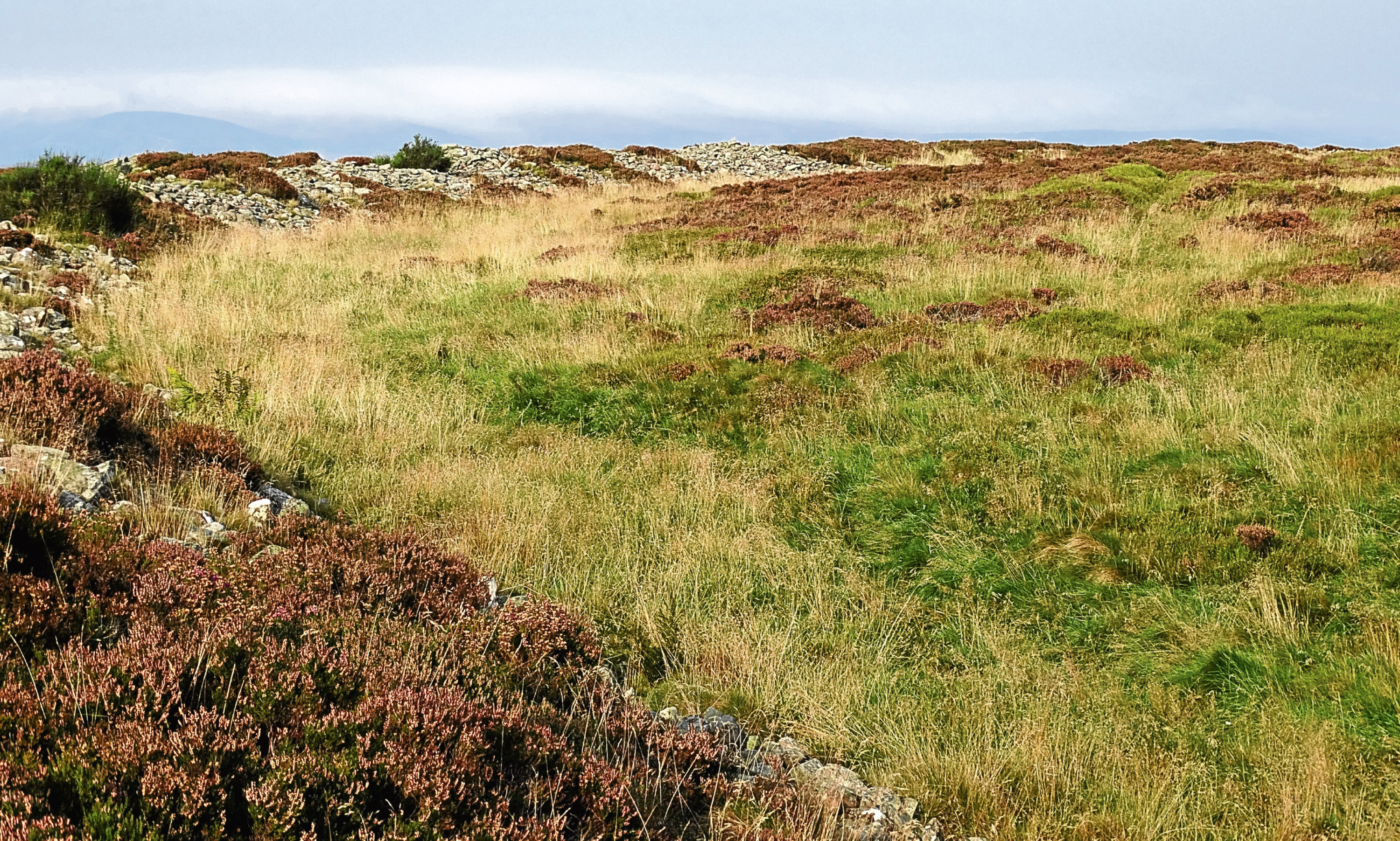The Caterthuns are two Iron Age forts on two prominent hill tops on the ridge of hills north-west of Brechin, overlooking the glens of Angus.
As with most things from that period, there are conflicting theories about their actual age, construction and use.
The White Caterthun seems likely to have been a settlement. A depression in one corner has been identified as probably a well, although there is no sign of water in it now.
The Brown Caterthun to the east was described by one historian I knew as a religious centre. Who knows for sure? Being so well sited geographically on the top of hills with tremendous fields of vision I should have thought there are, at least in part, military and defensive explanations for them.
Blue painted wee Scotchmen without wheelbarrows or JCBs and, at best, just rudimentary picks and shovels built these impressive hill forts effectively with brawn and muscle power.
Several acres in size, they are extraordinary feats of human endeavour. Their builders must have understood more than just basic engineering skills and have had well developed concepts of strategic planning.
I mention all this because Inka and I took our first walk up the White Caterthun for more than four years.
There was heat in the sun but it was disappointing that a haze hung over the horizon as I was looking forward to the long views.
The bloom is off the heather now but there are still pockets of fading bell heather. Looking eastwards towards the coast, Strathmore is a patchwork of golden stubble and fields of barley waiting to be combined.
It’s exposed up there at this time of year but it must have been bleak for the Iron Age residents in the depths of winter.
A roaring fire, a bearskin and a beaker of heather ale would have been essentials.
We were high enough to escape the everyday sounds of agricultural working life and there was only the whisper of a mild breeze blowing over the summit.
On the brae face of the Brown Caterthun on the other side of the road leading to Glen Lethnot, grouse called to each other with their distinctive chirring cackle.
The extended hot weather is still providing plenty of hatches of flying insects for the house martins and I watch them racing across the sky feeding hard, building up energy reserves for the unbelievably long journey for such small birds to their winter quarters in Africa.
They’ll soon be gathering on the rooftops and telephone wires in anticipation of the collective, instinctive moment when they know it’s time to leave.
A welcome visitor was a juvenile male great spotted woodpecker, which flew into a whitebeam at our front door. It didn’t stay long and it knows now that the whitebeam doesn’t have fissured bark, like a Scots pine, which is the ideal habitat for the larvae, moths and insects which make up its diet. I must put out some peanuts to tempt it back.
A reader sent a photograph taken at night of a hedgehog calling at her cat’s feeding bowl in the garden and polishing off the uneaten cat biscuits.
It seemed quite unfazed by human presence – or very hungry – because it was happy to have its photograph taken and paused from its meal long enough for some more biscuits to be poured into the dish.
Hedgehogs are one of our wild species most under threat so it’s good to find one in your garden. They are the gardener’s friend and eat snails and slugs when not tucking into cat biscuits. Visit rspca.org.uk to get practical advice on how to encourage these useful animals to stay in your garden, what to feed them and, much more importantly, what not.
Once in a while you meet someone you wish you could have known longer.
Last Saturday I drove over Cairn o’ Mount into Deeside to attend the funeral of a man I had known only three and a half years. He was a gentle man and though we met only infrequently he was always welcoming and ready to chat.
Our introduction to each other came by Air Mail from a brother officer, living out his days in Nepal, with whom he had served in the Gurkhas and to whom he had sent a copy of my book, Tales from the Scottish Countryside.
It was a mark of the modesty of the man that I only learned from the address given on his behalf what a full and varied life he had led. It was a mark of the affection in which he was held by the community he had retired to, and contributed so much, that the church was overflowing with friends who had gathered to say their farewells.
He is buried in a quiet kirkyard which slopes gently eastwards, catching the sun to warm his memory. As the service drew to a close a cushie called down from the trees behind us. Sunshine and song – it seemed a pretty good note to bow out on.
